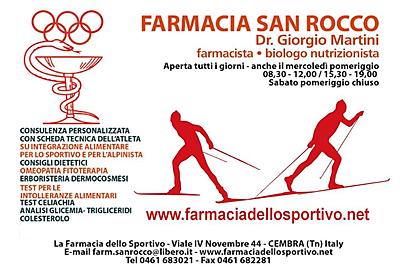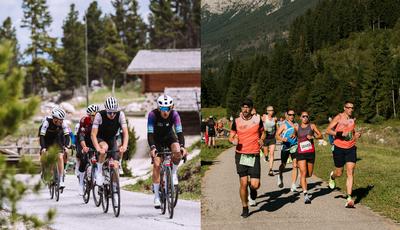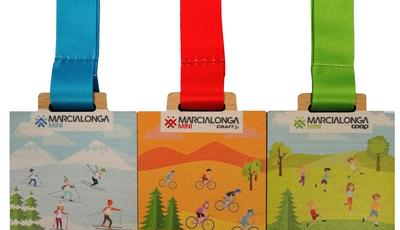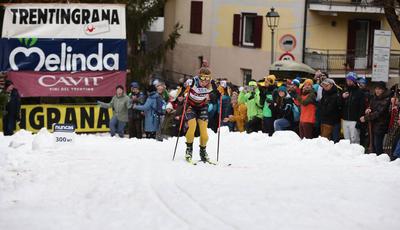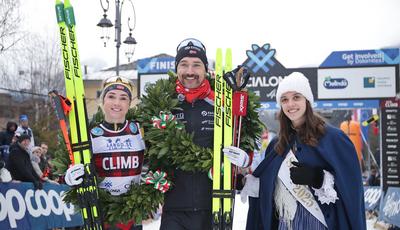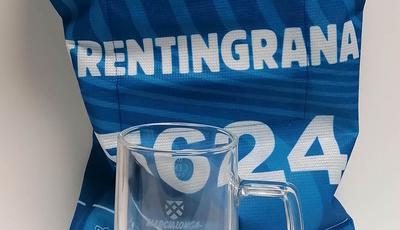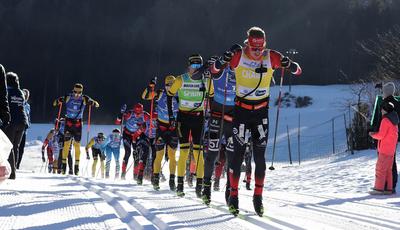25.01.2026
THE SUPPLEMENT DURING THE TRAINING OR THE RACE
We to talk Dr. Giorgio Martini
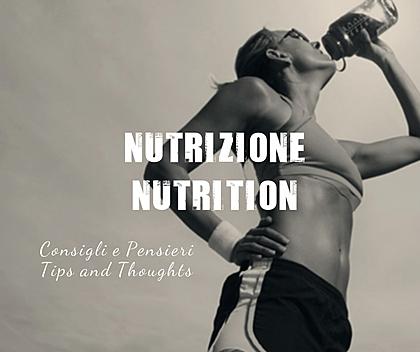
| News date | 08.11.2016 |
Today we speak to Dr. Giorgio Martini, pharmacist, nutrition biologist, doctor in the sector of fitness and health products and in nutritional science. It is clear that the theme of the day is nutrition and in particular the supplement during a long race or an intensive training.
The use of the food supplements for the cross-country skiers is sometimes difficult both for the practical aspect (gloves, equipment) and for the technical one (the cold temperature could freeze them), but it is a fundamental component of the sport activity.
First, we should speak about right beverages and mineral salts suppliers.
The body produces heat during the muscular workout and the sweat is an automatic reaction to get it out and to avoid an increase of the body temperature. Sweating eliminates the body water and causes, in the long run, dehydration and consequently a fall of the muscular performance and the possibility to have cramps, strain and exhaustion of the body resources.
This sensation is not immediately perceptible because in winter, due to the wind and the cold temperature, we are dry outside and we do not think we are sweating. Then, suddenly, an abrupt energetic exhaustion catches us and it is not easy to balance this lack just drinking water or salts. Even during the winter, the lack of body fluids must be anticipated, drinking at regular intervals (for example every 15’ – 20’) specific beverages. When we are thirsty after an uphill is already too late, we should drink before. The fundamental substances for a good hydration are sodium (Na), potassium (K), chlorine (Cl) and magnesium (Mg).
To avoid a quick exhaustion of the standby of blood glucose and muscular glycogen (the sugar that gives the first energy) it is important to take a mix of carbohydrates with different absorption rate, so that we have energy enough for the whole performance. The ideal drink, that can be store in special bottles (like the insulated drink belts) and has a good energetic power, should be hypotonic (it is not too concentrate), tastes good, with a hydration function and a high capacity of gastric emptying.
Analyzing the solid food, we should be careful about their components and ingredients. One of the most common and practice solution is the energy bar.
The bar has to be easy to chew and to assimilate. A lot of them are too protein (40%) and this means problems of digestion during the race or the training. The mouth must not be pasty from the bar because this leads to drink a lot but we should save beverages during the race. It is also important to consider the chocolate bars: they taste good but they are difficult to digest and could use the blood of the muscles, necessary to move them. We can eat them preferentially after the activity.
The dried fruit is a very good alternative food but it could be problematic when taking it with the gloves and on the move.
New products have been studied to guarantee a good and high level body performance for a longer time, and consequently a state of complete physical and mental wellbeing. This foodstuff is the energetic gel. The gel does not alter the baseline glucose, allowing a constant energy input of at least 45’. It can be diluted in water or, even better, it can be sucked and it has the additional advantages not to freeze and to be easy to digest.
Gels contain a mix of easy, medium and complex carbohydrates and MCT (Medium-chain triglyceride) and give a high energetic input with a smaller quantity of this product. In this way we can prevent a hunger crisis or a drop in power and we can continue the physical effort longer.
The gel has been used for a test during two 8000m peak expeditions, K2 (Walter Nones) and Everest (Mario Andrighettoni, Francesca Raffaelli).
Other types of integration are natural substances such as the amino-acids. These are efficient before the training because their use limits the weight of fatigue and the muscle cannibalization, in other words the exhaustion of glycogen caused by the too much training (the over-coaching). The assumption of amino-acids before a period of intensive workout allows a better result and a longer athlete's stamina.
Amino-acids are even useful after the sport activity for recovery from muscle fatigue. In this case, in addition to the amino-acids, a good mix of substances should have also carbs, glutamine, minerals, vitamins and antioxidants. They have only a flow, because they must be diluted in water and not taken directly.
Last, we recommend to drink and eat well before, during and after the workout or the race to avoid hunger and fatigue crisis and to get a better performance.
READ ALSO
MARCIALONGA SKIING: HOW TO PLAN THE BEST TRAINING
XC SKIS WITH SKINS: DO THEY REALLY ALLOW GOOD PERFORMANCES?
THE IMPORTANCE OF THE MUSCULAR STRENGHT FOR THE XC SKIING AND FOR THE WELLNESS
WHAT SHOULD CONTAIN A WAX BOX?
PILATES, AN EXCELLENT TRAINING FOR XC SKIING
THE SECRET FOR PREPARING FOR A LONG DISTANCE RACE
THE MOTIVATION IN THE ENDURANCE SPORTS
ANTONELLA CONFORTOLA: EXPERIENCE AND ADVICE ON MARCIALONGA
back to list
Main Sponsors




Official Sponsors


Sustainable Partner

Official Suppliers























Official TV Broadcaster

Institutional Partners






Friends


Under the patronage of








